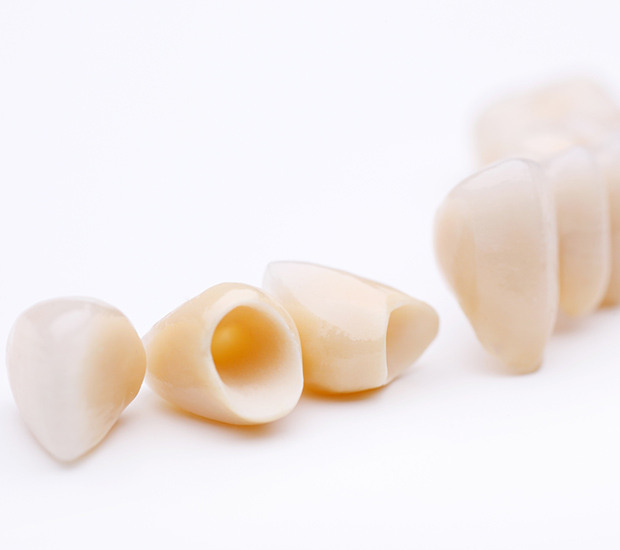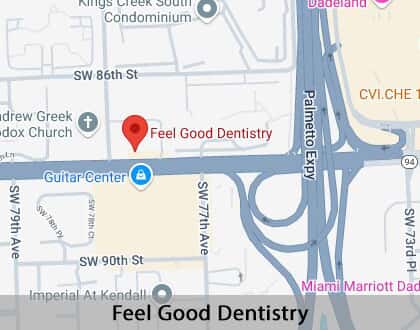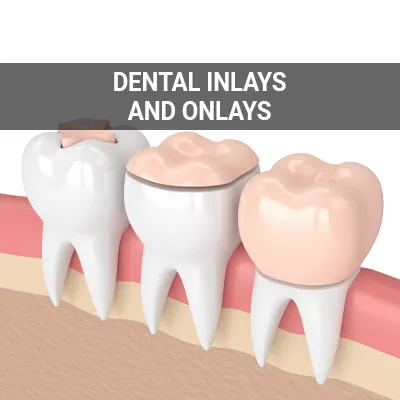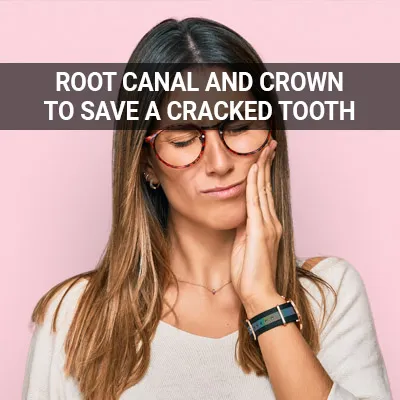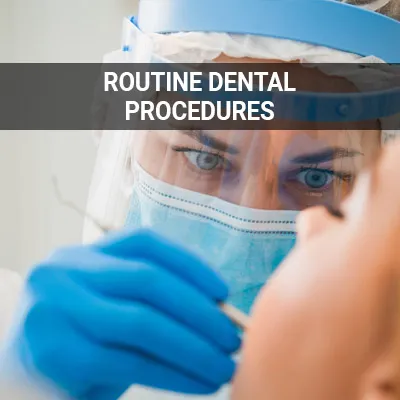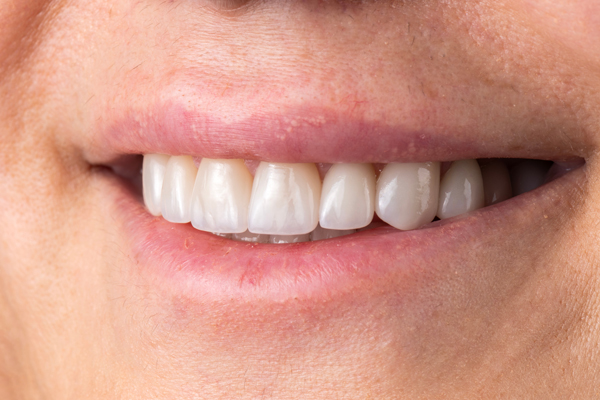Dental Crowns and Dental Bridges Miami, FL
Patients with damaged or missing teeth can regain the health benefits and appearance of functional teeth with the help of dental crowns. These are artificial caps that are fitted over a tooth or an implant abutment to provide structure.
Dental crowns are available at Feel Good Dentistry in Miami and the surrounding area. Our dentists offer crowns and other options to help optimize dental health. Crowns are often offered as part of a larger treatment plan that considers each patient's medical history, oral health, and personal preferences.
Getting a crown can provide benefits in several types of situations. Consulting a qualified dentist about available options is critical in making the right decisions for your dental care. Call us at (305) 230-4484 to make an appointment.
What is a Dental Crowns and Dental Bridges?
A dental crown is a cap shaped like a tooth that provides support and protection for a damaged tooth. This may be necessary when a natural tooth is broken, worn down, or structurally weak. A crown can also be placed on a tooth that has a large filling, which can weaken its structure. Crowns can also be used cosmetically to cover a tooth when the patient is unhappy with its color or shape.
We also place crowns to support a dental bridge. A dental bridge is used to replace one or several missing teeth. It consists of the replacement tooth or teeth on a framework, which attaches to teeth on either side. This framework can be permanent or removable. To support a bridge, the teeth on either side need to be fitted with crowns.
“A dental crown is a cap shaped like a tooth that provides support and protection for a damaged tooth.”
How Dental Crowns and Dental Bridges Work
Crowns can be attached to an implant. The post of the implant, placed within the jawbone, replaces the roots of the tooth. According to the American College of Prosthodontists, this is a popular procedure in which the number of implant-supported crowns placed each year reaches 2.3 million. A crown over an implant can also serve as support for a dental bridge in the absence of natural teeth in the necessary location.
Several types of crowns vary by material. Common materials for dental crowns include porcelain fused to metal, ceramic, metal, and resin. Metals are typically alloys, which have the advantage of durability but the disadvantage of a conspicuous appearance. Due to this, dentists may use them for molars that are not visible. Porcelain and ceramic materials offer more accurate color matching; however, porcelain fused to metal can offer better wear. Recently, zirconium, a type of ceramic, has become a popular material due to its aesthetic qualities. A study review in the International Journal of Prosthodontics suggests that zirconium may provide a level of durability similar to that of metal-based porcelain.
“A dental crown is a cap shaped like a tooth that provides support and protection for a damaged tooth.”
Why Patients Get a Dental Crown
Some patients may choose dental crowns to avoid further damage or decay to an existing tooth or to maintain an aesthetically pleasing smile. Crowns can also help prevent tooth loss that could lead to additional oral health problems and more expensive dental work. Additionally, patients may find crowns help them maintain a normal bite and keep the teeth from shifting.
“Crowns also help prevent tooth loss that could lead to additional oral health problems and more expensive dental work.”
Check out what others are saying about our dental services on Yelp: Dental Crowns and Dental Bridges in Miami, FL
Receiving a Dental Crown Step-by-Step
It may take a few appointments for a patient to receive a crown. In many cases, the dental crown procedure is part of another dental treatment plan, such as a root canal. Here is the step-by-step process for getting a dental crown:
- Before the Crown. The dentist treats any problems before starting the dental crown creation process. Any infections or cavities must be addressed or filled. Sometimes, an old crown needs replacement. In this case, the dentist will remove the remnants first.
- Preparation. Next, the dentist must prepare the tooth for the crown. The dentist or another member of our team will shave down the tooth to make room for the crown. Then, the dental staff makes a series of impressions to send to the lab. Some patients receive a temporary crown at the end of this appointment.
- Crown Delivery. Once the crown is ready for delivery, the patient must return to the office for placement. First, the dentist tries on the crown to make sure it feels and looks right in the mouth. If it fits correctly, the dentist uses dental cement to glue it in place permanently.
“In many cases, the dental crown procedure is part of another dental treatment plan, such as a root canal.”
Questions Answered on This Page
Q. Why should I get a dental crown?
Q. What is it like to go through the process of receiving a dental crown?
Q. How does a dental crown work?
Q. What are the types of dental crowns?
People Also Ask
Q. Am I a good candidate for a dental bridge?
Q. What is a dental emergency?
Q. What is restorative dentistry?
Q. How can a root canal help save my cracked tooth?
Q. What types of dental bridges are available?
Types of Dental Crowns and Dental Bridges
There are many different materials used in dental crowns, including porcelain, ceramic, zirconia, metal, composite resin, or a combination of materials. The type of crown depends largely on the patient's case, condition, treatment type, and current oral health status. Patients are often able to choose the type of crown they prefer if their condition permits.
Dental crowns are often used to replace a tooth after an extraction, root canal, implant procedure, or other treatment. After an evaluation, we are able to determine the type of crown to best fit the patient's case. Consult our team with questions about our dental crown services and the types of crowns that could be suitable for your condition.
“The type of crown depends largely on the patient’s case, condition, treatment type, and current oral health status.”
Frequently Asked Questions
Q. How long does a dental crown last?
A. Crowns usually last between five and 15 years. Good oral hygiene can extend their lifetime towards the higher end of this range. Additionally, avoid putting stress on them by biting on hard foods or chewing ice.
Q. What should I do if my dental crown comes off?
A. WebMD recommends cleaning the crown and the accessible parts of the tooth. Call the dental office right away and follow the care instructions given until the appointment. In the meantime, it is possible to use dental adhesive or temporary dental cement to replace the crown. The dentist will either replace the crown permanently or order a new one.
Q. How should I take care of a temporary dental crown?
A. Avoid chewing on the side of the mouth with the crown, if possible. Likewise, avoid hard or sticky foods that could pull off the crown. Follow a regular oral hygiene routine but avoid flossing up and down around the crown, as that could displace it.
Q. Is it possible to whiten a dental crown?
A. Regular tooth whiteners do not work on dental crowns. It is best to choose the preferred color before the crown is placed. Most crowns are made of porcelain or a combination of porcelain and metal. As a result, they do not discolor easily and should not present this problem once placed.
Q. Will my dental crown look like a real tooth?
A. Crowns are shaped to look like real teeth. We also strive to match them by color and ensure that they do not stand out among the natural teeth. While metal is sometimes used for crowns, it is generally reserved for teeth that are not visible.
Cosmetic Dentistry Terminology
Call Us to Get More Details
Our dental crown options in Miami give patients choices for tooth restoration. If you have concerns about your teeth, call us today at (305) 230-4484 to schedule a consultation regarding any questions you have about our dental crown services.
Helpful Related Links
- American Dental Association (ADA). Glossary of Dental Clinical Terms. 2025
- American Academy of Cosmetic Dentistry® (AACD). Home Page. 2025
- WebMD. WebMD’s Oral Care Guide. 2025
About our business, license, and website security
- Feel Good Dentistry was established in 1998.
- We accept the following payment methods: American Express, Cash, Check, Discover, MasterCard, and Visa
- We serve patients from the following counties: Miami-Dade County
- We serve patients from the following cities: Miami, Doral, Hialeah, Fontainebleau, Homestead, Sweetwater, Coral Gables, Kendall, South Miami, Westchester, Pinecrest, Dadeland, Coconut Grove, Palmetto Bay, and Brickell
- FL (License #DN14923). View License Information and Specifics
- National Provider Identifier Database (1528403946). View NPI Registry Information
- Healthgrades. View Background Information and Reviews
- Norton Safe Web. View Details
- Trend Micro Site Safety Center. View Details
Back to top of Dental Crowns and Dental Bridges
